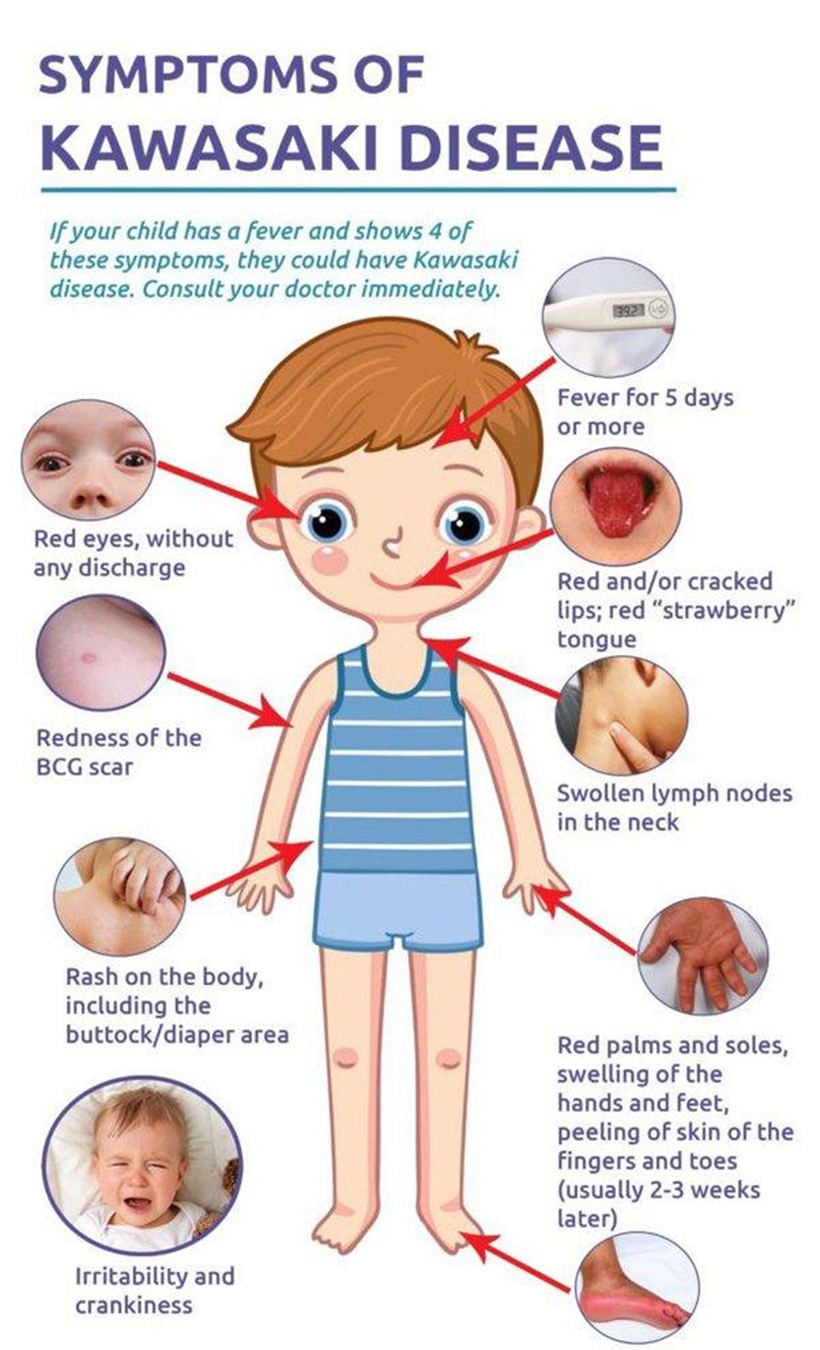On assessment of a child admitted with a diagnosis of acute-stage Kawasaki disease, the nurse expects to note which clinical manifestation of the acute stage of the disease?
Cracked lips
Desquamation of the skin
Normal appearance
Conjunctival hyperemia
The Correct Answer is D
A. Cracked lips:
Incorrect: While red, cracked lips are part of the mucous membrane changes seen in Kawasaki disease, they are not specific to the acute stage. Mucous membrane changes can occur in both the acute and subacute stages.
B. Desquamation of the skin:
Incorrect: Desquamation, or peeling of the skin, is more characteristic of the subacute or convalescent stages of Kawasaki disease, particularly on the fingers and toes.
C. Normal appearance:
Incorrect: In the acute stage, the child with Kawasaki disease typically exhibits signs of illness, including fever and other clinical manifestations. A "normal appearance" would not be expected in the acute stage.
D. Conjunctival hyperemia.
Explanation: Conjunctival hyperemia, or redness of the eyes, is a common clinical manifestation of the acute stage of Kawasaki disease. Other typical signs and symptoms during this stage include fever, mucous membrane changes (such as red, cracked lips), changes in the extremities, rash, and cervical lymphadenopathy.

Nursing Test Bank
Naxlex Comprehensive Predictor Exams
Related Questions
Correct Answer is ["800"]
Explanation
The Parkland formula is commonly used to calculate the fluid requirements for burn resuscitation. The formula is:
Fluid requirement (in mL)=TBSA×Weight (in kg)×Fluid volume (in mL/kg)
For burn patients, the recommended fluid volume is typically 4 mL/kg for each percent of TBSA burned.
Let's calculate the fluid requirement for the given case:
Fluid requirement=40%×22 lbs×4 mL/kg
First, convert the weight from pounds to kilograms:
Weight (in kg)= Weight (in lbs)/2.2
Weight (in kg)=22 lbs/2.2≈10 kg
Now, calculate the fluid requirement:
Fluid requirement=40% x 10 kg × 4 mL/kg
Fluid requirement=1600mL(totalfluidover24hours)
Fluid for the first 8 hours:
1600/2=800ml
Thus, the child will receive 800 mL of fluid in the first 8 hours after the burn injury.
Correct Answer is D
Explanation
A. Cracked lips:
Incorrect: While red, cracked lips are part of the mucous membrane changes seen in Kawasaki disease, they are not specific to the acute stage. Mucous membrane changes can occur in both the acute and subacute stages.
B. Desquamation of the skin:
Incorrect: Desquamation, or peeling of the skin, is more characteristic of the subacute or convalescent stages of Kawasaki disease, particularly on the fingers and toes.
C. Normal appearance:
Incorrect: In the acute stage, the child with Kawasaki disease typically exhibits signs of illness, including fever and other clinical manifestations. A "normal appearance" would not be expected in the acute stage.
D. Conjunctival hyperemia.
Explanation: Conjunctival hyperemia, or redness of the eyes, is a common clinical manifestation of the acute stage of Kawasaki disease. Other typical signs and symptoms during this stage include fever, mucous membrane changes (such as red, cracked lips), changes in the extremities, rash, and cervical lymphadenopathy.

Whether you are a student looking to ace your exams or a practicing nurse seeking to enhance your expertise , our nursing education contents will empower you with the confidence and competence to make a difference in the lives of patients and become a respected leader in the healthcare field.
Visit Naxlex, invest in your future and unlock endless possibilities with our unparalleled nursing education contents today
Report Wrong Answer on the Current Question
Do you disagree with the answer? If yes, what is your expected answer? Explain.
Kindly be descriptive with the issue you are facing.
